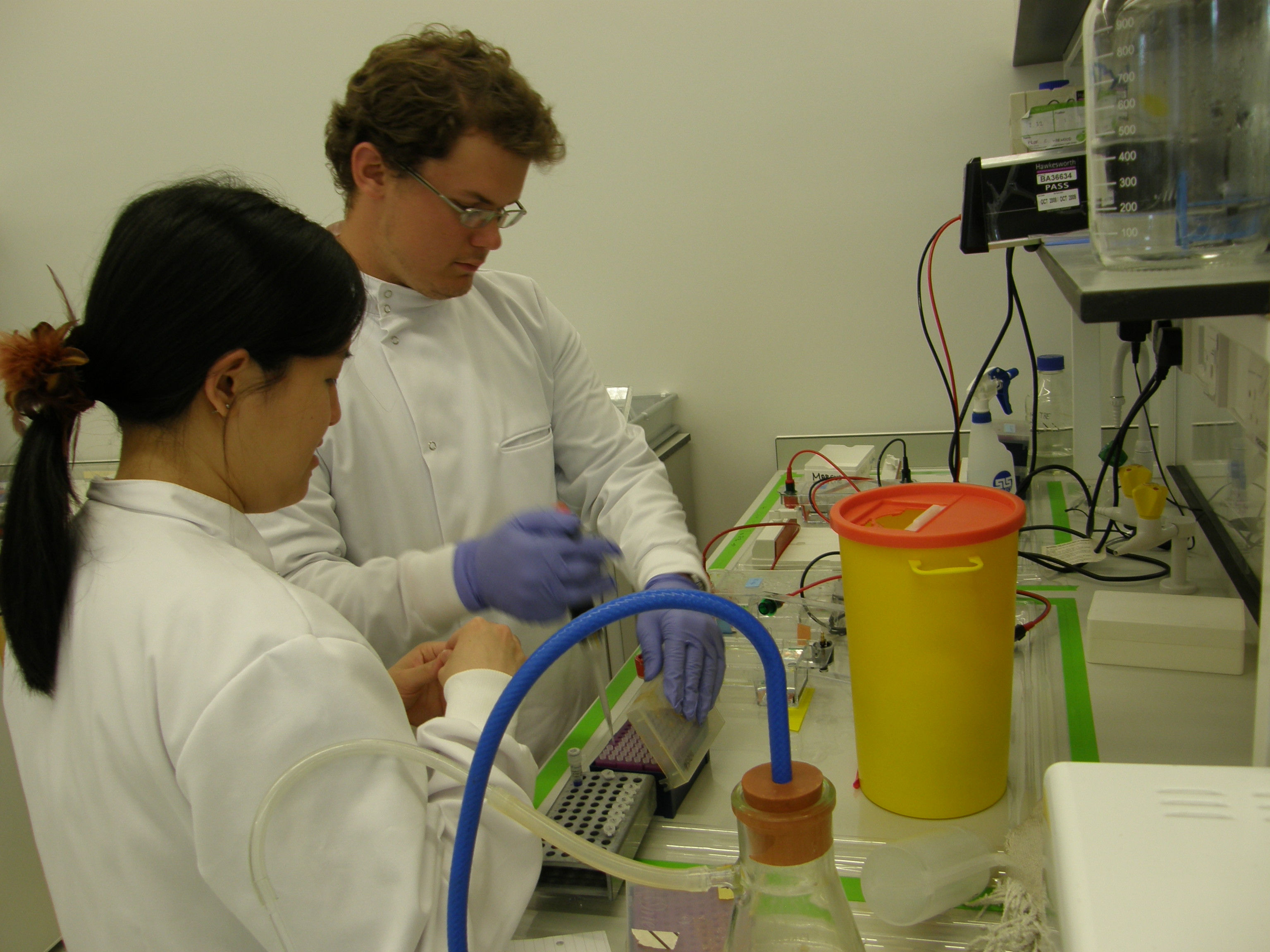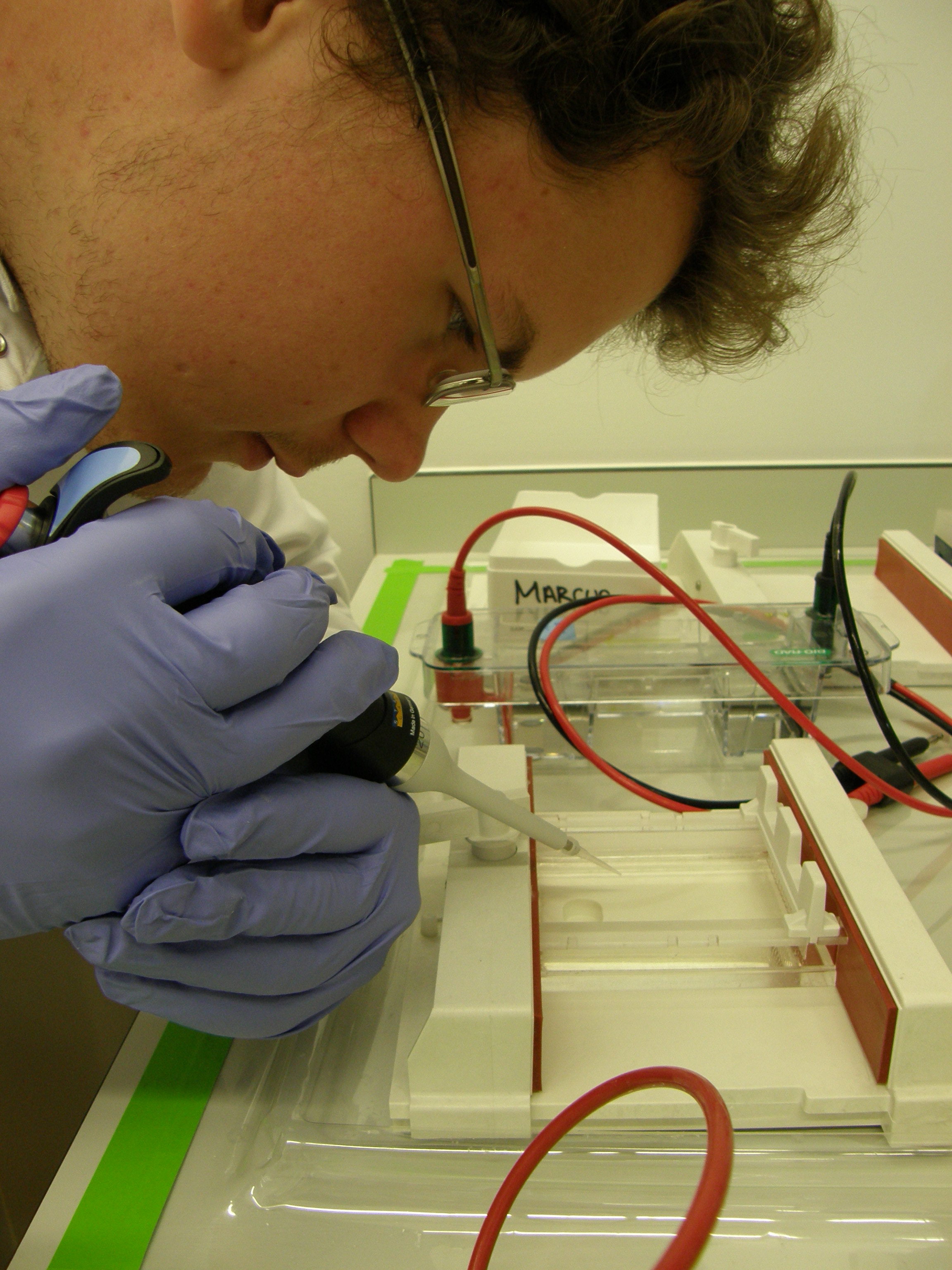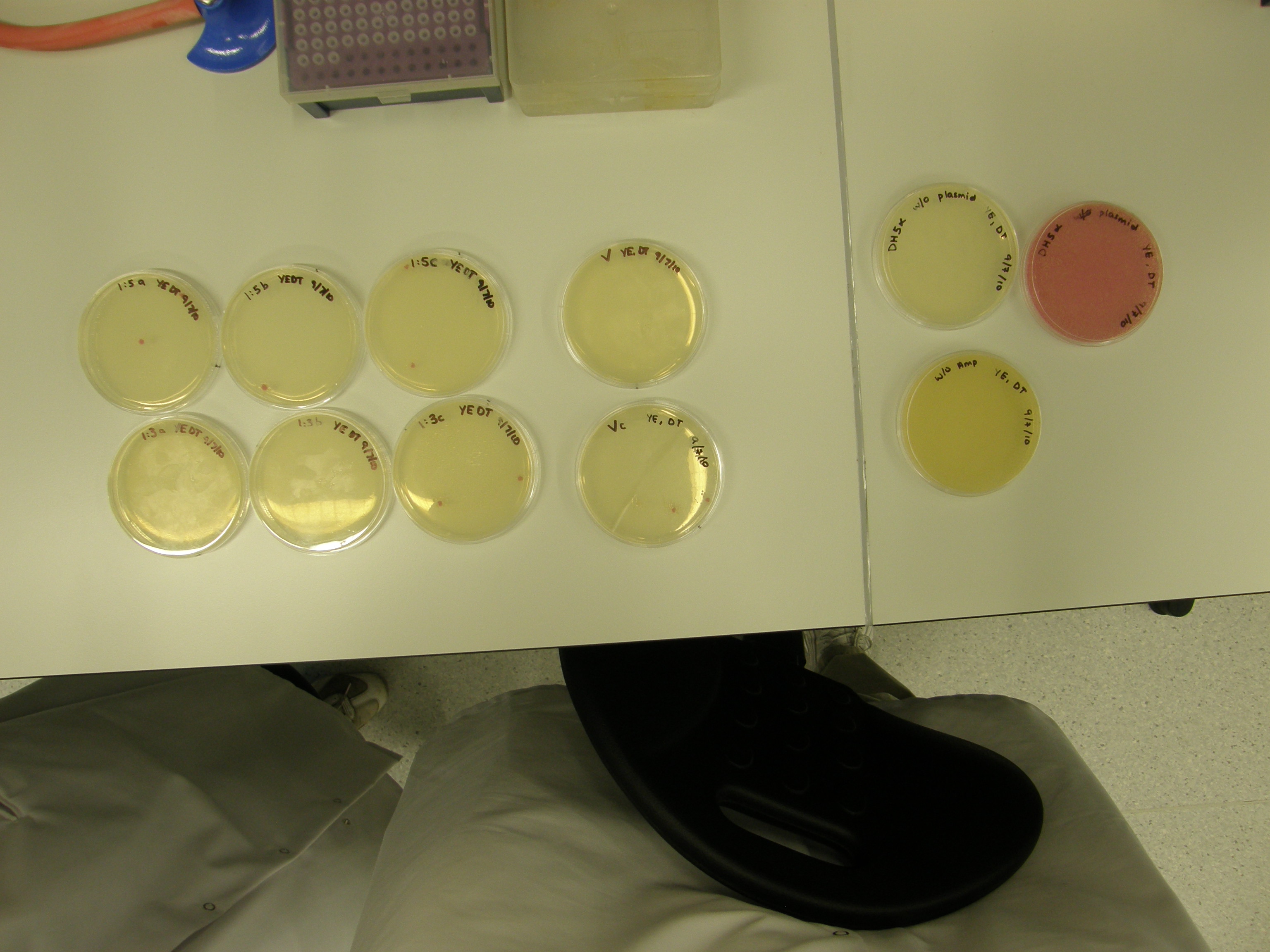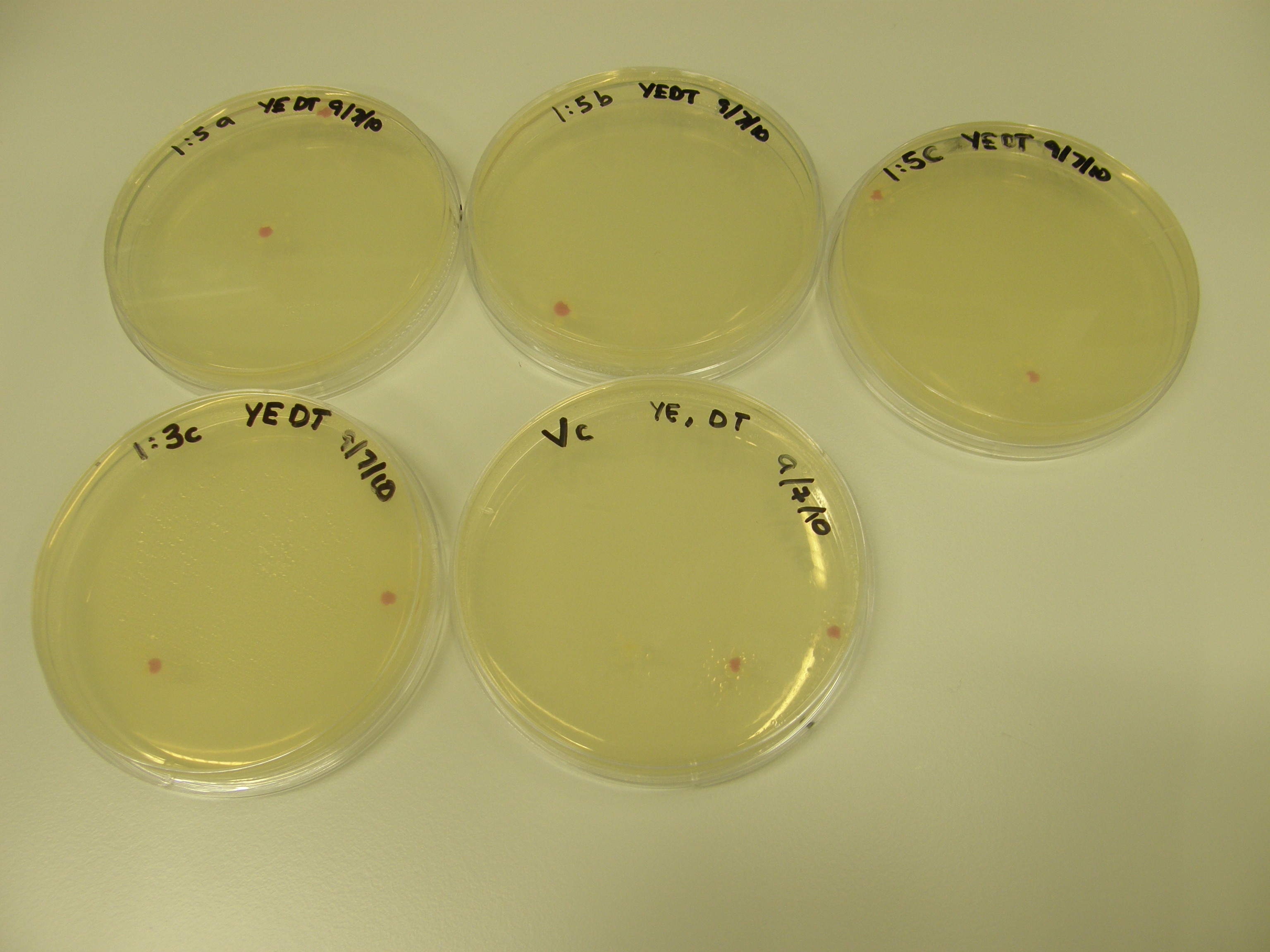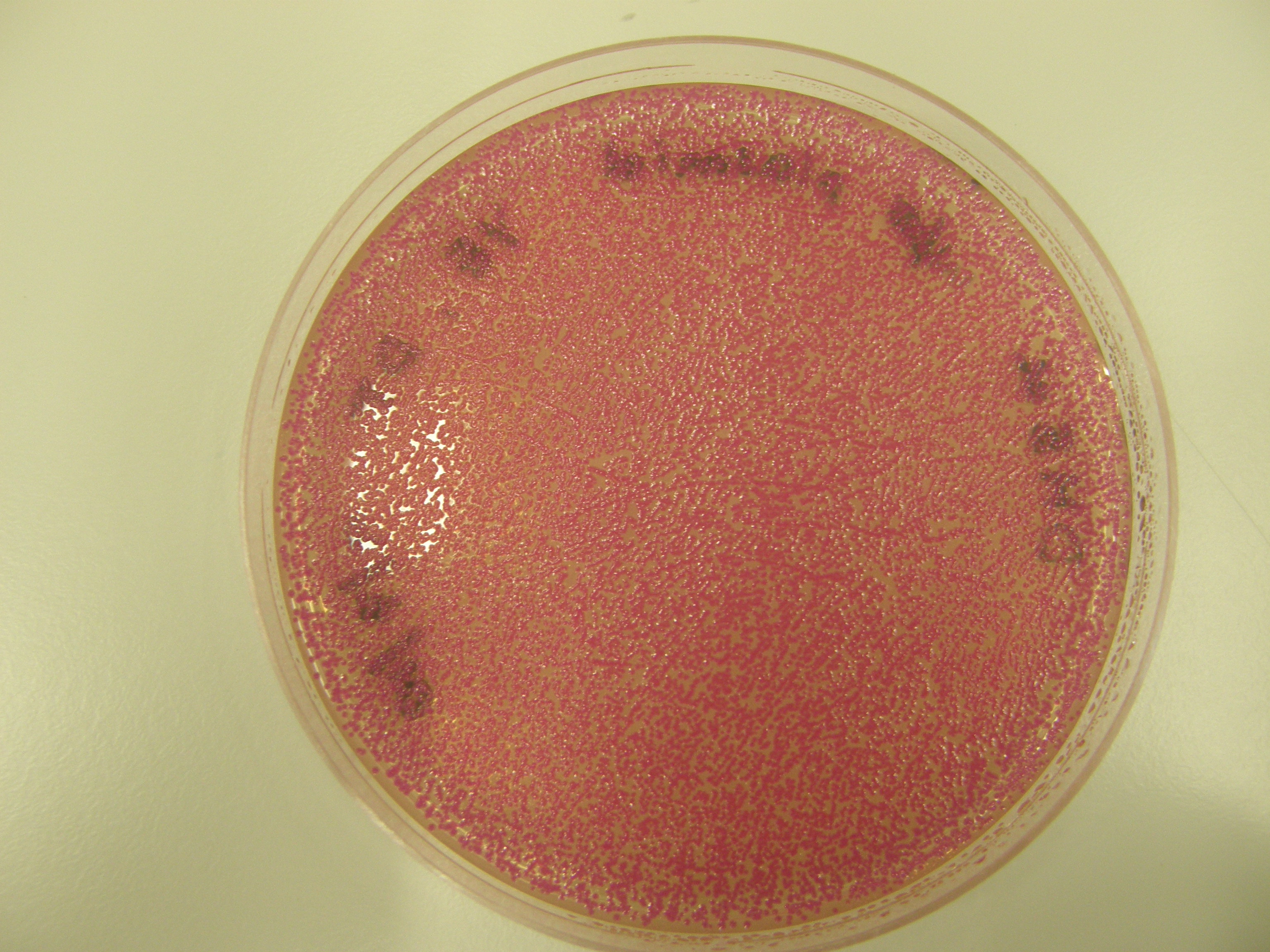Team:Newcastle/12 July 2010
From 2010.igem.org
(→All photos) |
|||
| Line 57: | Line 57: | ||
We are going to take one of the colonies that have worked and possible a whole plasmid prep. | We are going to take one of the colonies that have worked and possible a whole plasmid prep. | ||
| - | |||
| - | |||
| - | |||
| - | |||
| - | |||
| - | |||
| - | |||
Revision as of 12:37, 27 July 2010
Monday
Contents |
Aims
The aim of todays Lab session was to perform the following(see summary) to isolate lacI.
Summary:
- Colony PCR
- Streak plate
- Miniprep PCR- of colonies that worked
Equipment
- PCR reagents
- Agar plates
- Gloves
- Wire loop
Colony PCR
Of the 11 plates with colonies grown 7 were used for colony PCR and Streak plating. Colony PCR is less accurate than the mini prep however results can be seen quicker whereas the miniprep has a 1 day wait. The colonies selected selected were satellite colonies because ampicillin degraded???
7 Tubes were labelled 1-7 (+ a control)
The quantities for the PCR are as follows:
- 1microlitre Template
- 0.25 microlitre GoTaq Polymerase
- 2.5 microlitre forward primer
- 2.5 microlitre reverse primer
- 1 microlitre dNTP (10molar stock)
- 10.0 microlitre 5times GoTaq buffer
- 32.75 microlitre deionised H20
Note There are 2 possible reasons for red colonies formed:
- Partial digest- rejoins without insert
- with insert
We need to tell the difference between the two.
Note PCR is best when everything is kept on ice!
Note Melting temperatures of primers is important and can have a big effect on the product formed (Temperature used see Thursday)
Spread Plates
Tommorrow
We are going to take one of the colonies that have worked and possible a whole plasmid prep.
 "
"
